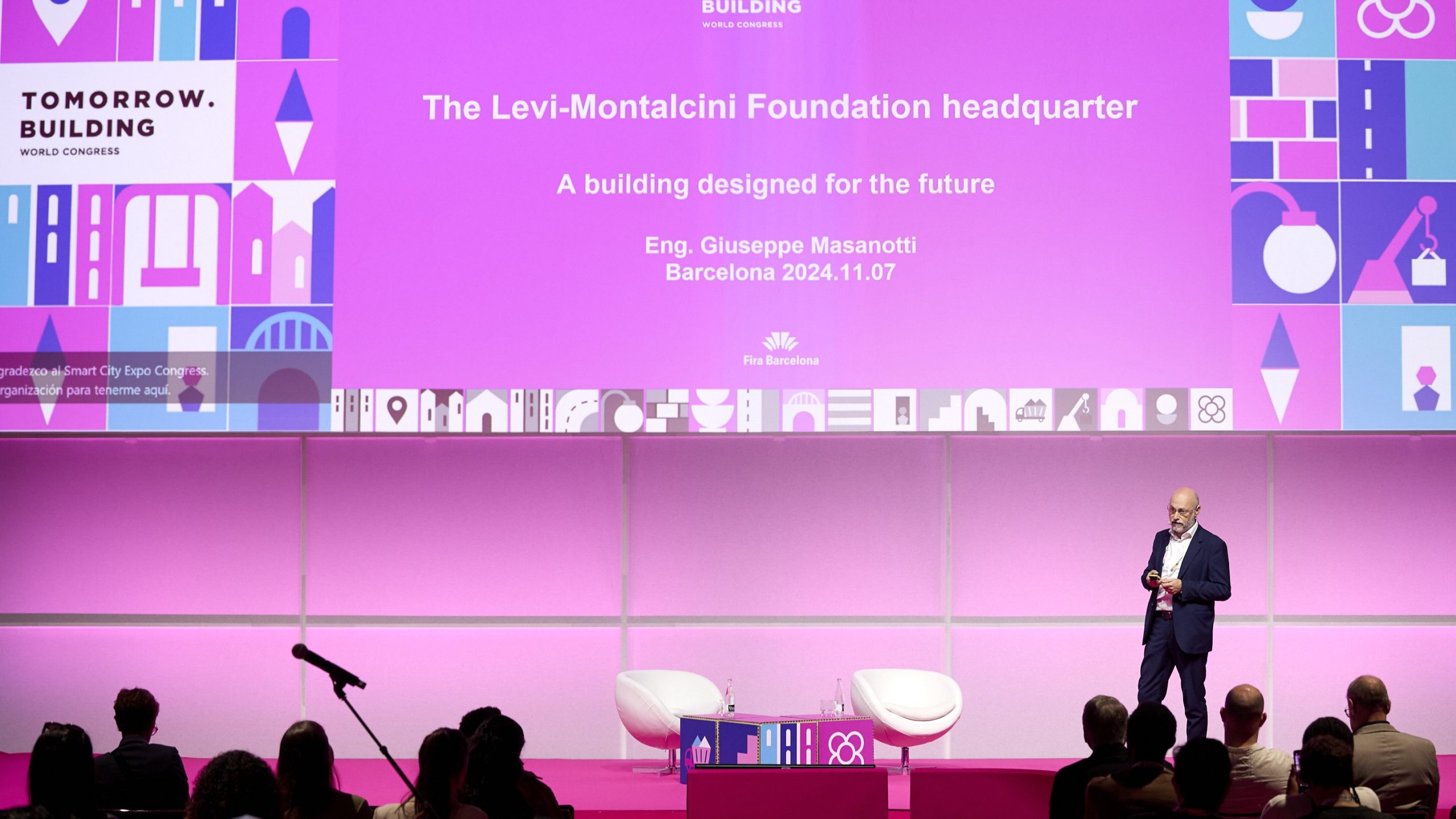Author | Raquel C. Pico
Construction is one of the world’s oldest economic sectors. Humans have needed all types of infrastructure since the beginning of time. Perhaps that is why, from the outside, the industry is often perceived as traditional and resistant to digital transformation. However, this is not entirely accurate, as new technologies are profoundly transforming the way all types of buildings and spaces are designed and constructed. Digital innovation has made its way into construction and civil engineering, with BIM as the key term for understanding this transformation.
BIM: A holistic methodology
What exactly do we mean by BIM? The term is actually an acronym for Building Information Modeling and represents a digitalized work methodology.
The software tools are integrated into the construction process, allowing for a digital representation of the building or infrastructure being developed. In a sense, it could be likened to a digital twin system, but it operates during the preliminary and initial phases of the project. While the digital twin exists once the infrastructure is operational, the BIM methodology allows you to visualize and plan every detail before the inauguration. Before the first brick is laid, so to speak, this technology enables you to visualize the outcomes, understand the results, and see how the various parts of the process will come together through a virtual representation.
In fact, what is particularly interesting about the BIM methodology is that it enables a holistic view of the entire construction. It integrates all the factors that influence the construction process, making it valuable for a wide range of fields. From architecture to civil engineering, the BIM methodology unites all the assets, providing access to the same conclusions and data. Each time a decision is made there is a complete photo of its effects.
The potential of BIM for civil engineering
This is especially valuable from a civil engineering perspective, as BIM provides a much more realistic view of the project through its virtual representation. By optimizing workflows, costs are reduced, worker safety is improved, and overall efficiency is enhanced. But, above all, the construction process becomes more precise, and the results are more accurate and aligned with expectations. This leads to a reduction in risks, both during the construction process and in terms of future performance.
Success stories: BIM to address urban challenges

The combination of all these factors not only enables infrastructures to be built more safely and efficiently but also potentially faster. The potential of digital innovation enhances all areas. For instance, in road infrastructure construction, road layout errors are reduced by 40%, and waste generation is cut by 5%. Resident opposition to infrastructure projects also decreases, as BIM provides a precise and realistic image of the final results, making it easier for the community to accept the project. Some studies have quantified this decrease in public objections at 25%. Efficiency improves, processes are accelerated, and project milestones are potentially achieved sooner.
This is especially valuable for cities facing an increasing number of challenges in construction and urban planning, where the need for new materials and tools is essential. The major challenges on their agendas in the 21st century—ranging from the housing crisis to the lack of green spaces, and the need to reduce infrastructure design issues—could be addressed by adopting an integrated approach to their solutions. This is exactly what BIM promises: the ability to view all the components simultaneously and in a connected, cohesive manner.
Jianping Gu, director and general manager of the company behind the Shanghai Tower explains, “We knew that if we tried to work in a traditional way, using traditional tools and delivery systems, it would be extremely difficult to carry out this project successfully.” The skyscraper, located in the Chinese city that bears its name, is one of the tallest buildings in the world and stands out for its particularly complex design and technical specifications. To tackle the complexity of the project, the team behind the Shanghai Tower utilized BIM, which brought together all the necessary disciplines into a single platform, enhancing work effectiveness.
Other successful cases highlighted in the media regarding the use of BIM include the construction of the Istanbul Airport (Turkey), which enhanced budget adaptability and project timelines while addressing the challenge of working with a large number of prefabricated elements. Another example is the regeneration of Clichy-Batignolles in Paris (France), where efforts were made to transform the neighborhood into a more sustainable and green space. New buildings were constructed using passive house standards, with the added challenge of ensuring that the construction itself achieved net-zero status.
It has also been applied in smaller, yet equally significant projects, such as the upgrade of a water treatment center in Durleigh (United Kingdom). BIM helped tackle the complexity of the site.
The challenges of BIM

The benefits of BIM are clear; however, there are also several challenges associated with the methodology. The first challenge lies in the knowledge and understanding of the methodology. To fully leverage its potential, one must have the necessary knowledge and expertise to effectively use it. This requires additional training, with participation from all areas involved in the project. From those responsible for the design to those overseeing civil engineering and architecture. If this digital innovation tool achieves a holistic vision, it is because it brings together all the pieces of the puzzle, requiring the involvement of all areas.
The second challenge lies in a complex area in itself: data management. The construction industry faces challenges in data management: as confirmed in a study by Deloitte, it is not currently harnessing the full potential of data. Data is one of the key components of digital innovation, but it is essential to know how to interpret and utilize them effectively. Construction companies typically analyze only one-third of the available information, with the majority of it being financial data. Eighty percent of companies have a significant opportunity for improvement in data management.
Data is essential to fully leverage the BIM methodology, which requires accurate and comprehensive information to function at its best.
Images | Kin Li, Denys Nevozhai, Artem Bryzgalov






















































